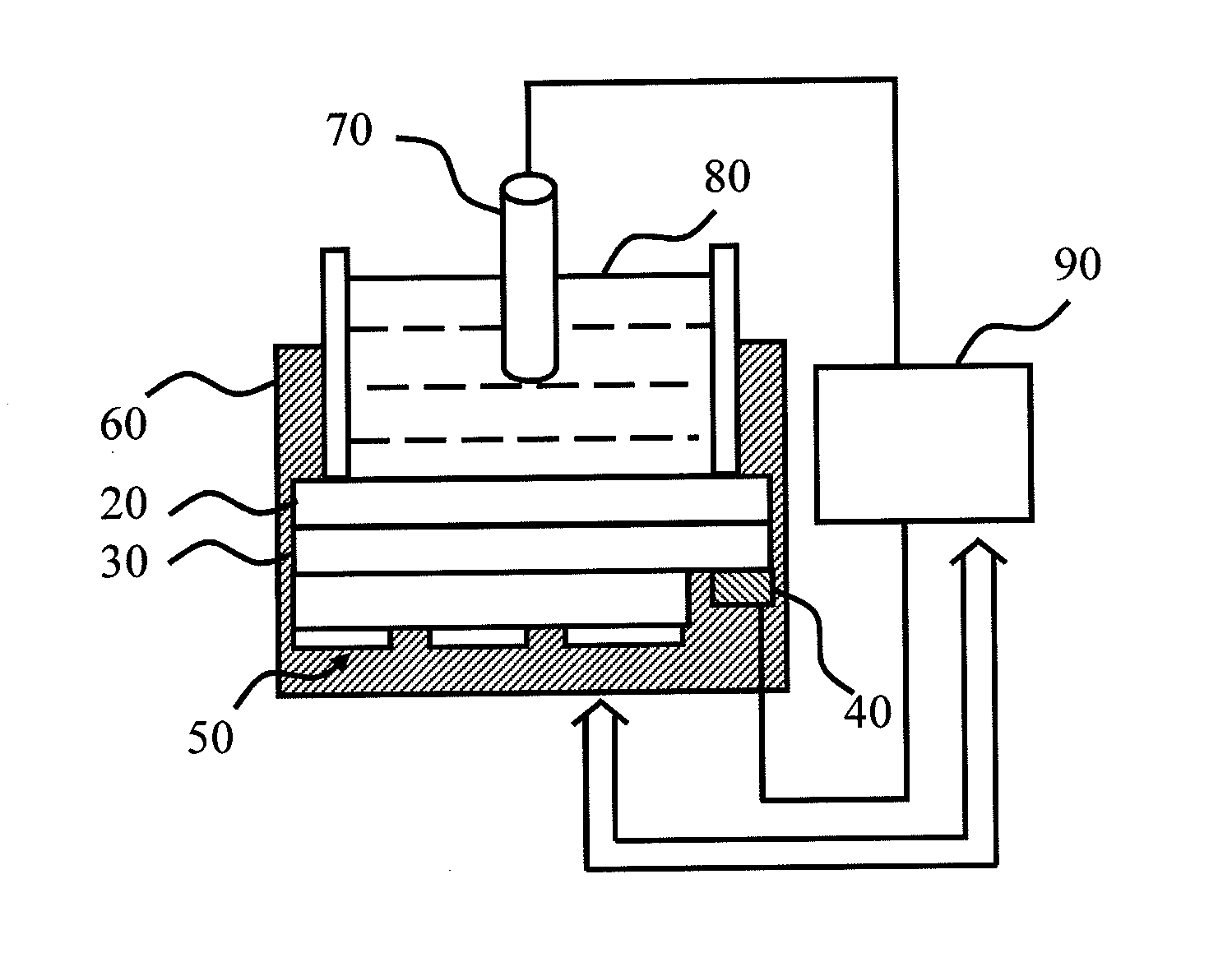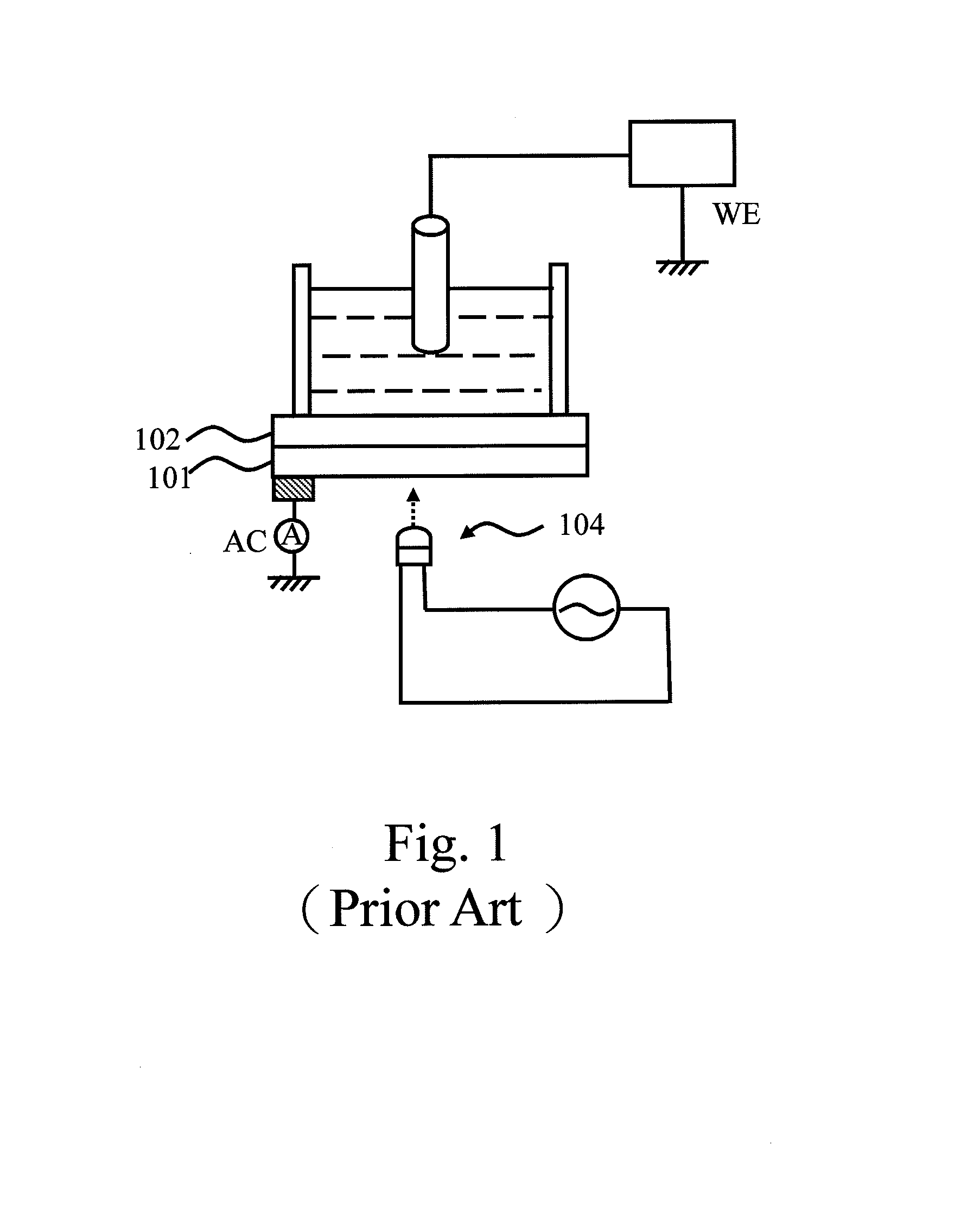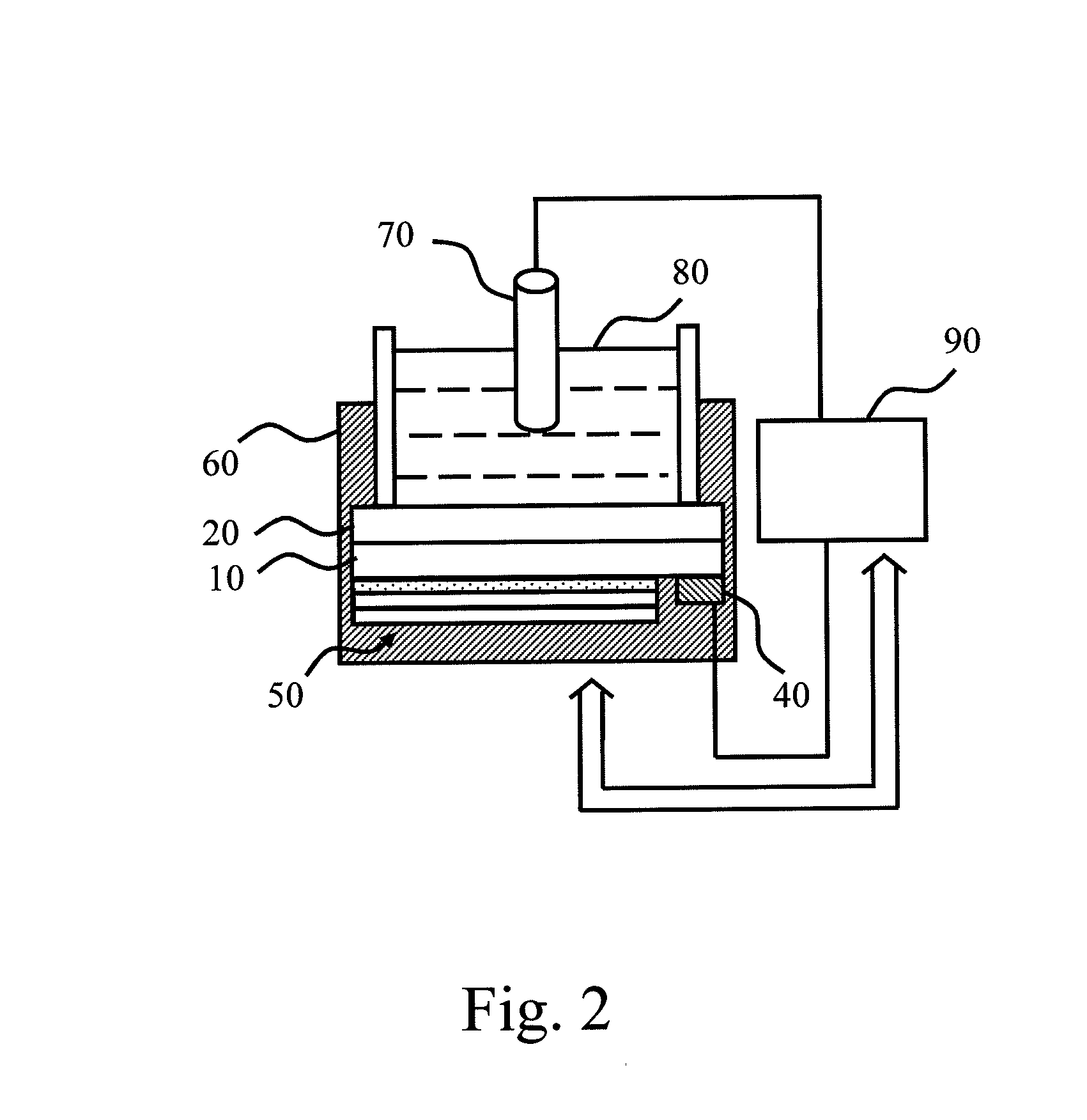Light-assisted biochemical sensor
a biochemical sensor and light-assisted technology, applied in the field of biochemical sensors, can solve the problems of limiting the convenience and practicability of laps, complicated measuring process, and large volume of the lap measurement system, and achieves wide application range, small error, and high sensitivity.
- Summary
- Abstract
- Description
- Claims
- Application Information
AI Technical Summary
Benefits of technology
Problems solved by technology
Method used
Image
Examples
Embodiment Construction
[0015]Refer to FIG. 2, which is a diagram schematically showing the measurement system of the light-assisted biochemical sensor according to an embodiment of the present invention. The light-assisted biochemical sensor is used to detect the pH value of the electrolyte.
[0016]In this embodiment, the light-assisted biochemical sensor comprises a semiconductor substrate 10, a sensing layer 20, an active electrode 40, and at least one lighting element 50. In the fabrication process, the P-type semiconductor substrate 10 with direct band gap or the N-type semiconductor substrate 10 with direct band gap is adopted, such as a GaAs substrate. In the airtight reactive chamber of the physical vapor deposition system or the chemical vapor deposition system, the sensing layer 20 is deposited on the front surface of the semiconductor substrate 10 using the adapt gas, pressure, and power, wherein the sensing layer 20 comprises SiO2, Si3N2, Ta2O5, or REO (rare earth oxide). The sensing layer 20 can...
PUM
 Login to View More
Login to View More Abstract
Description
Claims
Application Information
 Login to View More
Login to View More - R&D
- Intellectual Property
- Life Sciences
- Materials
- Tech Scout
- Unparalleled Data Quality
- Higher Quality Content
- 60% Fewer Hallucinations
Browse by: Latest US Patents, China's latest patents, Technical Efficacy Thesaurus, Application Domain, Technology Topic, Popular Technical Reports.
© 2025 PatSnap. All rights reserved.Legal|Privacy policy|Modern Slavery Act Transparency Statement|Sitemap|About US| Contact US: help@patsnap.com



